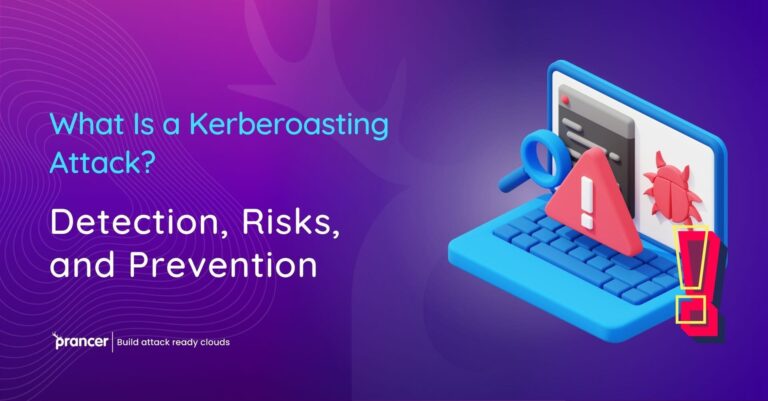

In the fast-moving cyber world, application security layer is a save guard for digital menaces. This vital component of your security architecture uses a layering approach to secure software applications from possible weaknesses and threats. Automated Penetration Testing, is among these methods and gives a comprehensive examination of resilience level of security layer. In this blog, we will discuss the holistic approach to build up your application security layer and ways that Prancer expertise enhances these undertakings. This is meant to serve as a strong shield for your applications to withstand various cyber threats.
This is important in creating a strong application security layer because it involves understanding various application security models. Such models offer a strategy for deploying security controls during each stage of the application lifecycle including development, deployment and maintenance. These models can be integrated so that the overall approach to securing the applications is total.
1- Layered Security Approach: Develop a defense-in-depth strategy on your application security layer, by implementing layered security. Such an approach reduces the intensity of a single point failure.
2- Regular Vulnerability Assessments: Continually assess vulnerabilities in the application security layer, and match brawn to ensure defenses remain current.
3- Automated Penetration Testing: Use automated tools for emulating cyberattacks on your applications, revealing any weaknesses in the security of the application layer before they occur.
4- Code Analysis and Review: Conducting extensive code reviews and analysis enables early detection of security flaws during development that boosts the application security layer in the inside.
5- Robust Authentication and Authorization Controls: One of the actions is employing resilient authentication mechanisms, putting access to applications into control that constitutes a part of the application security layer.
6- Data Encryption: As part of your application security layer encryption should be used to protect sensitive data in transit and at rest
7- Incident Response Planning: This includes developing and maintaining an up-to-date incident response plan for addressing any application security-layer breaches swiftly.
8- Employee Training and Awareness: Human error frequently plays the role of weakest link in application security layer, and at all times it must be made sure that each of team members undergoes training about how to practice strong security.
9- Compliance and Regulatory Adherence: Meet security relevant standards and regulations, strengthening the effectiveness of the application-security layer in a variety of legal contexts.
Prancer enhances the application security layer by offering advanced tools and expert knowledge, especially in automated penetration testing. Our solutions easily tie in with current security models providing a escalated safeguard that is vast and helpful to be modified to other threats.
With the cyber world further developing every day, a strengthening of the application security layer is crucial for protecting against digital threats. This holistic approach involves a layered defense model, continual vulnerability assessments and innovatory practices such as Automated Penetration Testing. It points out how Prancer’s skills improve these measures, adding sophisticated hardware at each step of the request lifecycle. Apart from strengthening the security aspect, this integrated approach manages itself to cope with different cyber threats helping to reinforce protection of every digital interface.
Understanding Application Security Models
Understanding different Application Security Models is the cornerstone of a competent application security build-up. These models offer a systematic approach for the deployment of security controls at each step in an applications lifecycle – from development to implementation and on-going maintenance. Integration of these models ensures that the application security layer is holistic and seamless.
The nine essential elements of comprehensive protection.
Layered Security Approach: A defense-in Depth strategy should be applied. Through a technique called layering, the vulnerability that stems from one point of failure is greatly reduced to achieve stronger application security layer.
Regular Vulnerability Assessments: It is also critical to continuously assess vulnerabilities in order for the application security layer remain robust as new threats arise.
Automated Penetration Testing: This approach entails automated tools for simulating assaults on applications that reveal any risks in the security layer of an application before they can be exploited.
Code Analysis and Review: Wide-ranging code reviews and analysis play a critical role in the early detection of security vulnerabilities during development, strengthening the application’s internal protection.
Robust Authentication and Authorization Controls: Control access to applications and are an integral part of the security layer for application.
Data Encryption: There is also a need for the application security layer to encrypt sensitive data in transit and at rest, which prevents access by third parties during breaches or leaks.
Incident Response Planning: An incident response plan that is constantly updated facilitates rapid remediation of breaches in the application security layer.
Employee Training and Awareness: The human factor is most often the weakest link in security. Training team members regularly in the best security practices is necessary.
Compliance and Regulatory Adherence: Conformity to security standards and regulations makes the application security layer more effective under different legal considerations as well as in compliance with regulatory policies.
Prancer’s function in improving application security:
Prancer increases the application security layer dramatically by providing powerful tools and specialist information especially in automatic penetration testing. Their solutions readily fit into current security models, so they offer a wider and more flexible protection against different attacks.
The Burying Approach to Application Security.
With cyberworld evolution, the reinforcing of application security layer becomes more and more relevant. There is a layered defense approach, continuous vulnerability assessments as well innovative practices such as automated penetration testing. Prancer’s competence is critical to this process as it provides complex solutions at each level of the application cycle. First, this strengthens the security angle by enabling it to cope with various forms of cyber-attacks and ensuring effective protection for all aspects in a digital environment.
Automated Penetration Testing: A Key Component
The core of application security layer strengthening is automated penetration testing. With the simulation of actual cyber attacks, it can detect and remedy weaknesses to avert potential destructions. This preemptive approach is critical in the modern cyber threat arena.
The holistic approach to application security.
A holistic application security approach is not only dependent on technical solutions but it also entails planning, constant updates and human factors such as training and awareness. This comprehensive approach is essential to formulating a robust shield against cyber threats.
Prancer’s Role in Strategic Planning for Security
Prancer enhances strategic security planning, with its advanced automated penetration testing tools and knowledge. Their solutions are intended to work in conjunction with existing security protocols so that the application security layer is resilient and flexible enough for emerging threats.
the significance of regular updates and maintenance.
Updates and maintenance of the application security layer should be done regularly to enable it to stay in pace with changes that usually happen regarding cyber threats. This involves changing security routines, patching vulnerabilities, and rewriting incident response plans as needed.
Training and Awareness: Human Aspects of Cybersecurity
One aspect of cybersecurity that is often underestimated but it extremely important for the effectiveness of application security layer is human side, especially training and awareness. Frequent training will enable every team member to be informed of the recent threats and practices; this decreases human error-based breach risks.
Compliance plays the role of Application Security.
The establishment of regulatory standards and security best practice represents a critical aspect in the maintenance of application security. Thus, it ensures that the security present at the application level not only serves to protect against threats but also complies with legal and industry-specific requirements.
A complete firewall against cyber threats.
A well-constructed application security layer must employ a comprehensive approach, involving technical solutions as well as human ones such as strategic planning and regular maintenance. The knowledge and experience of Prancr in the automated penetration testing play an important role here, which helps to create more efficient security fence. Therefore, as cyber threats continue to change with time advancing the requirement for protecting digital assets will also need a corresponding modification. The organizations should implement an all-encompassing and dynamic approach to defend themselves from the multitudes of cyber threat in today’s digital environment.
Conclusion
To wrap it up, providing security layer for your application entails multi-directional approach that encompasses different fields of cyber-defence. Organizations can improve their defense strategies by adopting these 9 key practices. Prancer plays an important role in providing superior tools and knowledge, especially automated penetration testing that guarantees a solid application security layer. And these are strategies that if adopted will not just safeguard your applications, but also strengthen your posturing against growing digital threats.
